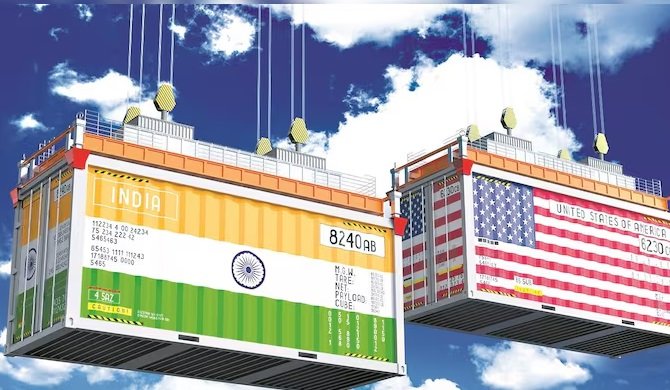Last Updated on November 3, 2025 6:25 pm by BIZNAMA NEWS
R. Suryamurthy
As the U.S. Supreme Court prepares to hear a landmark case on November 5 that could decide the fate of Donald Trump’s sweeping “Liberation Day” tariffs, India is watching with keen interest. The verdict in Learning Resources, Inc. v. Donald J. Trump will not only define the limits of presidential power in America but could also reshape India’s trade talks with Washington and the global rules of commerce.
At the heart of the case lies a simple but seismic question: can a U.S. president unilaterally impose tariffs under emergency powers without congressional approval? For India — one of the world’s largest exporters of pharmaceuticals, IT services, and engineering goods to the U.S. — the answer could spell the difference between predictability and prolonged uncertainty in trade policy.
How Trump’s Tariffs Rocked Global Trade
On April 2, 2025, President Trump declared America’s chronic trade deficit a “national emergency” and invoked the International Emergency Economic Powers Act (IEEPA), a 1977 law designed for national security crises, not trade disputes. Within days, his administration imposed a blanket 10% tariff on nearly all imports, later increasing them to 50% for select nations.
The move sent shockwaves through global supply chains. American importers faced higher costs, consumers saw price spikes, and countries like India found their exports caught in the crossfire. Though India was not directly targeted like China, many of its products — from auto components to textiles — faced increased duties. Trump justified the tariffs as a way to “restore industrial strength” and reduce America’s dependence on foreign goods.
But critics argued that Trump had twisted a national security law into an economic weapon. The Liberation Day tariffs, they said, were never authorized by Congress — the only body empowered to set tariff rates under the U.S. Constitution.
Three Courts Have Already Rejected Trump’s Argument
The issue has already been tested in three lower courts, all of which ruled against Trump. Judges found that the IEEPA did not give the president authority to impose general tariffs, and that his declaration of a trade deficit as a “national emergency” violated the separation of powers. The administration appealed, and now the case has reached the Supreme Court.
If the Court upholds the lower rulings, it would effectively invalidate Trump’s emergency tariffs. That could unravel several trade arrangements struck under their shadow and return tariff authority firmly to Congress.
Why India Cares About the Verdict
For India, the ruling will have immediate and long-term implications. The U.S. remains India’s largest trading partner, with bilateral trade crossing $200 billion last year. Many Indian exporters have struggled with the uncertainty created by Washington’s tariff-first approach — from higher import duties on steel and aluminum to unpredictable licensing and inspection delays.
“India’s trade negotiators have been operating in an environment where tariff policy changes overnight,” said Ajay Srivastava of the Global Trade Research Initiative (GTRI). “If the Supreme Court strikes down Trump’s emergency powers, it will restore some predictability to global trade and strengthen India’s hand in talks with the U.S.”
A rollback of the “Liberation Day” tariffs could also ease tensions in ongoing bilateral negotiations. Washington and New Delhi have been working on a limited trade package covering agricultural products, medical devices, and digital services. With Trump’s tariff authority under legal scrutiny, India may find more room to push for concessions, particularly on tariff exemptions and visa regulations for its tech workers.
A Broader Question of Trade Governance
The case also raises a philosophical question that resonates far beyond Washington: how much power should a single leader have over global trade? Trump’s use of emergency authority blurred the line between economic policy and national security. A judgment in his favor could embolden future U.S. presidents to act unilaterally — potentially destabilizing rules-based trade systems that countries like India depend on.
Conversely, if the Supreme Court curtails the president’s powers, it could reaffirm the role of Congress and reestablish checks and balances. That outcome would bring relief not only to U.S. businesses but also to countries like India, which rely on stable and transparent trade regimes.
High Stakes for Global Trade
The stakes go beyond legal theory. If Trump loses, the U.S. administration could be forced to withdraw the tariffs and recalculate billions in duties already collected. A victory for Trump, however, would set a precedent allowing future presidents to impose tariffs through executive orders — without public debate or legislative scrutiny.
As justices prepare to hear arguments this week, governments from Brussels to New Delhi are watching closely. The outcome will not only determine the fate of Trump’s tariffs but also shape the future of global trade governance — and how much say elected legislatures have in an era of executive-driven economics.
For India, the decision may mark the difference between a turbulent, tariff-heavy world and one where trade returns to the table, not the battlefield.

